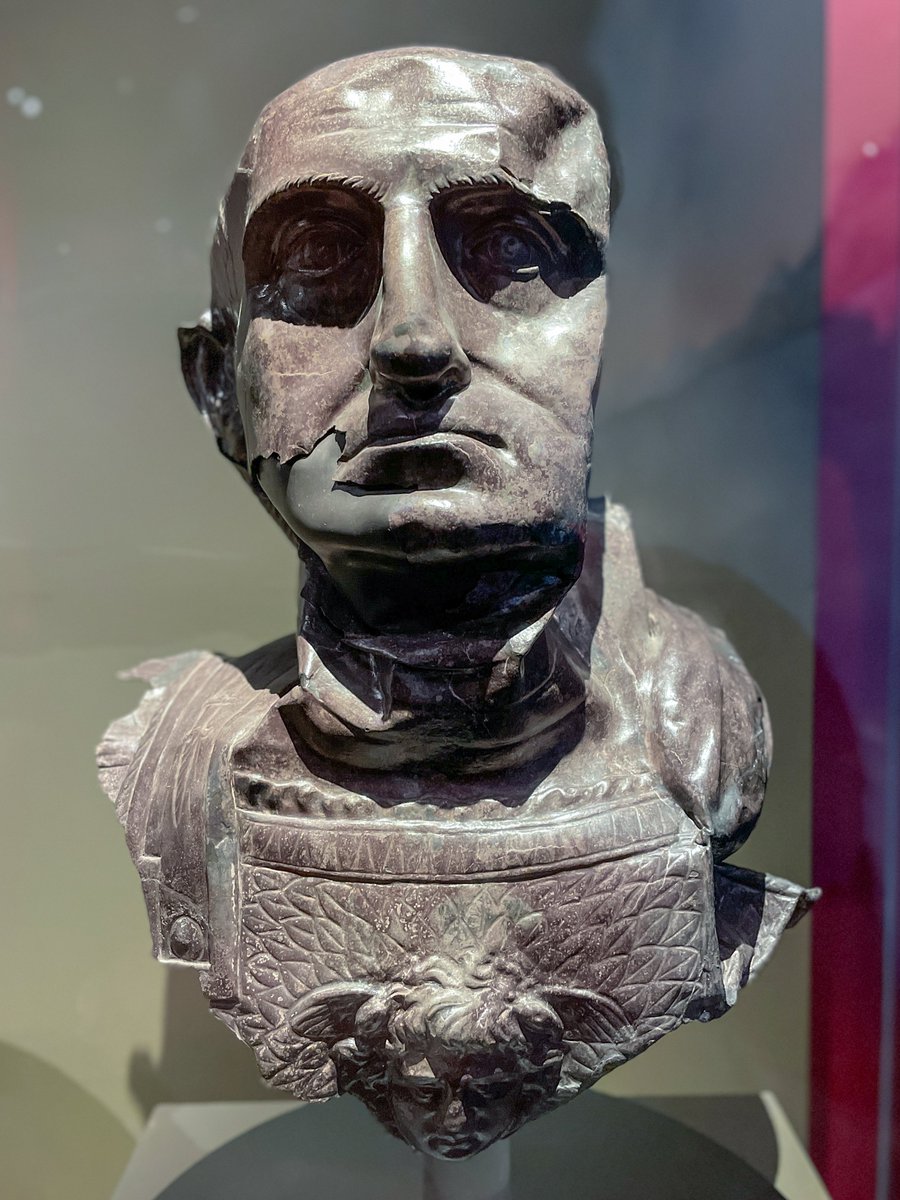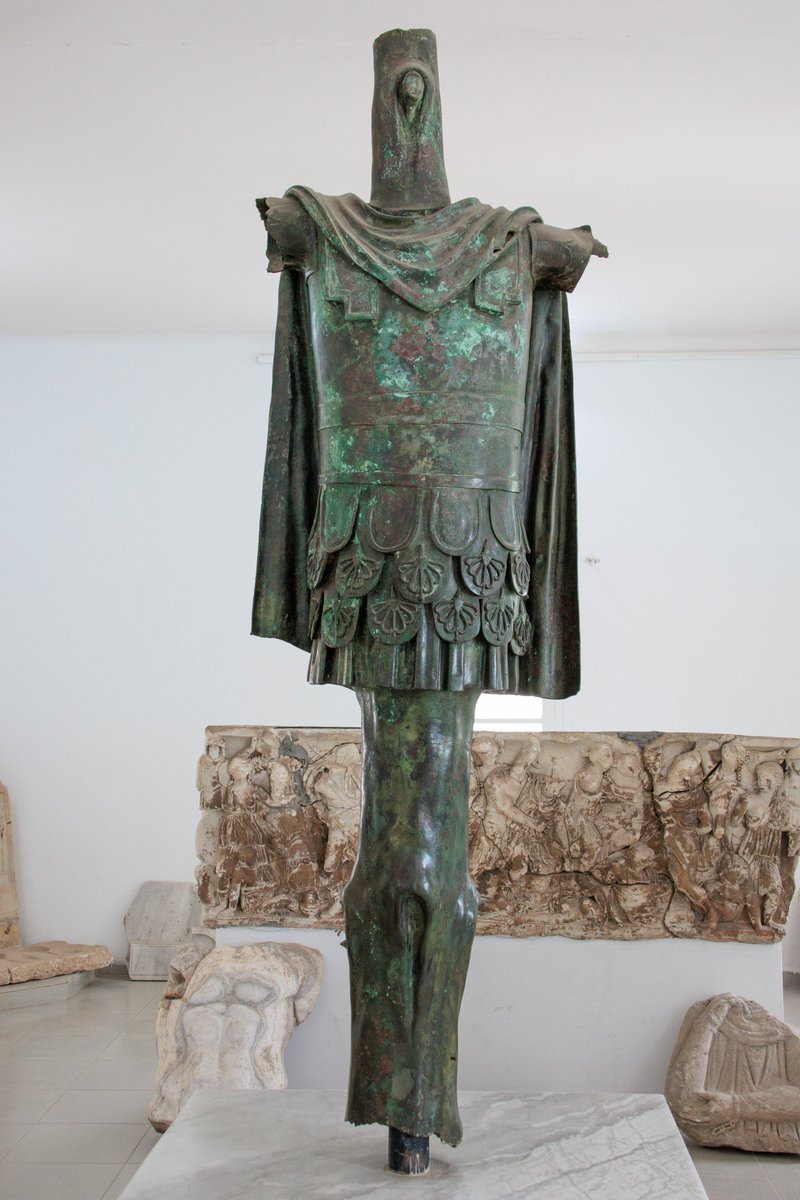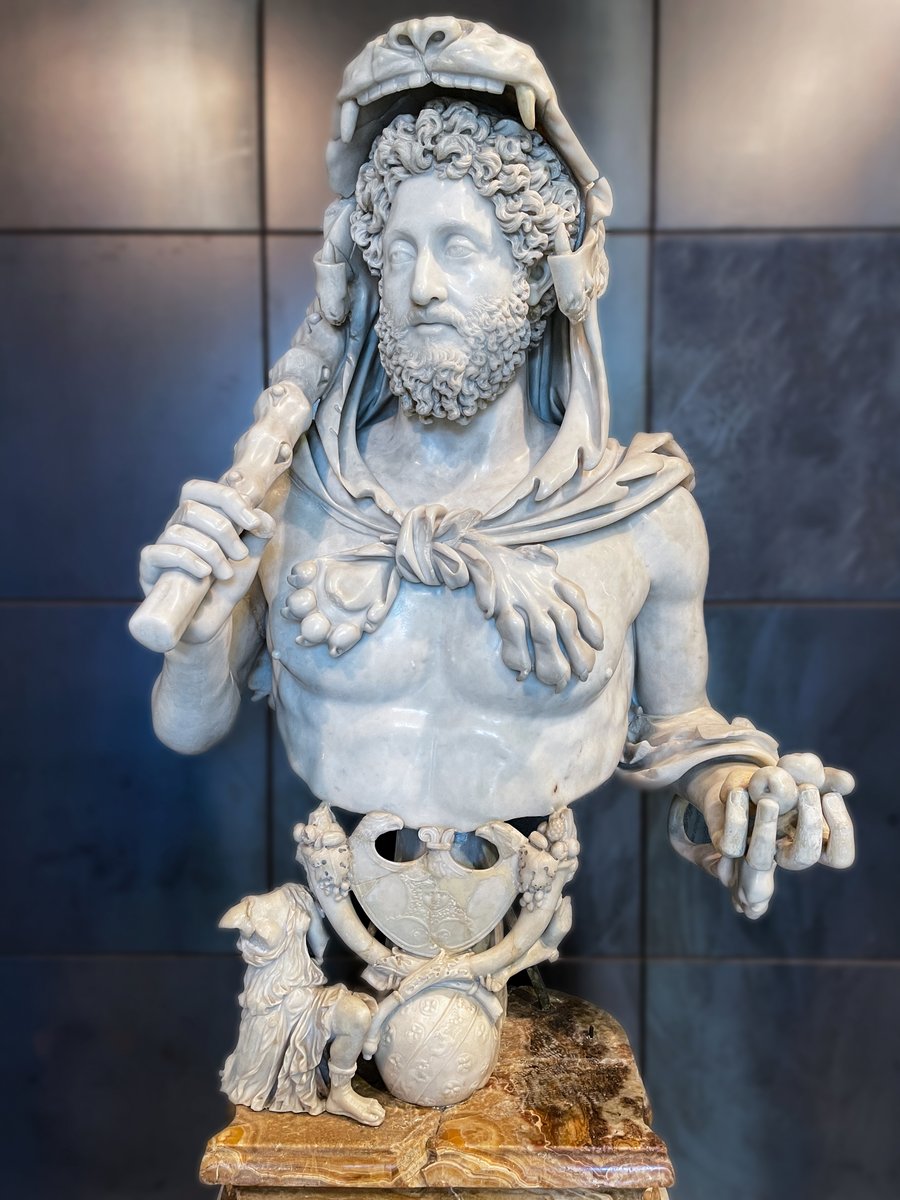1) The Colchester Mercury - probably the finest ancient bronze statue to have survived from Roman Britain. The statue was unearthed by a ploughman in December 1947, near a known Roman temple just southwest of Colchester (Roman Camulodunum) 

2) The discovery of the remarkable statue suggests the Roman temple, which now lies in Gosbecks Archaeological Park, may have been dedicated to Mercury - god of travellers and merchants. The temple stood beside the road from Camulodunum to Londinium.. 

3) ..supporting a dedication to Mercury; both towns were hugely important in the administration of Britannia and trade with the wider empire. Here Romans would have made offerings of thanks or requests for safe travel as they departed or arrived at the ancient city. 

4) The fine style and production of the statue indicate it was either made on the continent or perhaps in Britain by someone who had trained in continental metalworking and artistic styles, embracing Roman naturalism rather than any stylised abstractions of native British art. 

5) Few complete bronzes have survived from Roman Britain, making this beautiful example even more exceptional. The statue dating to the 2nd century AD can today be enjoyed at Colechester Castle Museum. 

• • •
Missing some Tweet in this thread? You can try to
force a refresh






















